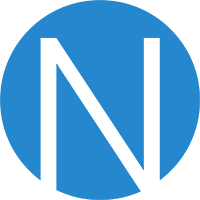- Valuation Model
- Expert Interviews
- Founders, funding
What are the key segments in the AI market and what is the state of AI expected in 2023?

Oscar Beijbom
Co-founder & CTO at Nyckel
It's useful to look at it from the perspective of who you're selling the AI product to.
There are two main personas you could be selling to—One, an in-house machine learning team where you assume that the users involved are machine learning experts who control the ML process and want full freedom to experiment. This could be a senior director, a senior innovator, or a contributor that actually makes a purchasing decision.
The other persona is a non-expert, like a product owner who just wants to solve a particular problem and doesn’t care about the inner workings of things.
In the first trend, you have the traditional machine learning ops (MLOps) ecosystem. You need someone like Scale, to help with data labeling. You also need a company like Aquarium to help you with the data engine visualizing issues with your model and identify what data to send for labeling. You may or may not want to employ something like an AutoML engine or even network architecture search like NAS but probably want something like Weights and Biases for monitoring your experiments. You also probably want some sort of repository for your trained models. Ideally, that's tied to the data sets they were trained on. So, you have the lineage.
Then, you need some infrastructure for deploying your models and having that be elastic. You also need monitoring infrastructure on top of that to see how these models are improving over time or if they are degrading. There's a really big, messy ecosystem out there in AI right now, and it’s a challenge to figure out what to buy and what to build.
The other trend comprises the non-experts, who don't care about any of that. They have problems and they want to solve them. For them, the abstraction layer is the data itself. If I give you this input, I want this output. That's the abstraction. Then, you do everything—train, deploy, and monitor. You even tell me which labels I should be reviewing next and so on.
This can be done by a company like Nyckel with APIs or with an in-house ML team. It is similar to GPT-3 and the OpenAI interface, where arguably, you're not even doing any training. There is some prompt engineering that can be likened with training or fine-tuning, but the interface itself is built for non-experts.
As the deep nets become more sophisticated, not only in terms of their architecture and their size but also, in terms of how they are pre-trained, they become better and better, and an interesting trend begins to emerge. It used to be that you needed 10,000 label data points to even get something interesting. That's why companies like Scale existed and became big. But I don't think that's going to be the case anymore, at least for the majority of these cases.
You're going to have these foundational or pre-trained models like GPT-3 and need much less data. That changes everything because then, you don't need all this machinery around it. You just need to do a minimal amount of fine-tuning and train it very quickly with just a handful of examples.
With regard to the MLOps space that caters to experts, my guess is that it's going to shrink or at least not grow quite as fast as the space that it caters to—the end customer, the non-experts, and the product owner.
Scale provides data labeling and management services to companies building AI/ML models.
Nyckel sells ML-in-a-box solutions to ML non-expert users.

